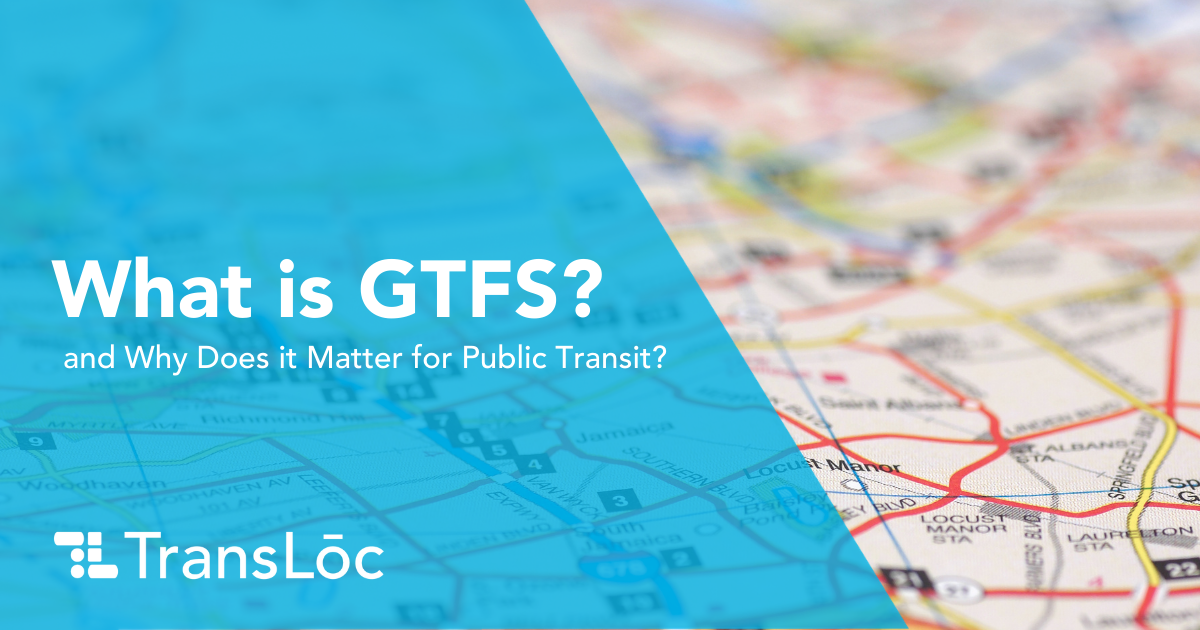
The History of GTFS
In 2005, an IT manager at TriMet, the public transit agency in Portland, Oregon, recognized a missed opportunity in public transit. She realized that it was often difficult for an average person to navigate public transit in an unfamiliar city. Even if the local transit agency had their own trip planning service, how were travelers to know where to find this information? At the time, it was much easier to type in your starting and ending location in Google Maps and immediately get back driving directions. This required much less effort than navigating public transit, thus encouraging car use. This is when the idea developed to produce a common format for public transportation schedules, and this format was called GTFS.
The term GTFS originally stood for Google Transit Feed Specification and was used to integrate transit data from TriMet into Google Maps to create the first version of Google Transit. The goal of Google Transit was to make it as easy for users to plan public transit trips as it was to get driving directions. The developers at Google wanted the format for GTFS feeds to be as simple as possible to give even smaller transit agencies the ability to adopt the standard, leading to their decision to use comma separated values (CSV) files. Even today, a GTFS feed is a compressed ZIP file containing CSV files. Each file models a particular aspect of transit information: stops, routes, trips, and other schedule data.
GTFS feeds require the following fields to be included:
- agency.txt: The agency who provides the data in this feed
- calendar.txt: A schedule of when the service is available
- routes.txt: The transit routes available to riders within a single service
- stops.txt: The individual locations where vehicles pick up and drop off passengers
- stops_times.txt: The specific times that a vehicle arrives and departs from a stop location
- trips.txt: A sequence of two or more stops that occurs at a specific time
After its launch in Portland, Google offered their trip planning service to any public transit agency for free, as long as they maintained their data in the required GTFS format above, and Google Transit quickly spread throughout cities in the United States.
Why is GTFS Important?
Since its creation in 2005, GTFS has become an integral part of the transit data landscape, and it’s no longer solely valuable to Google and transit agencies. GTFS feeds can be used by software applications for trip planning, ridesharing, timetable creation, mobile data, visualization, accessibility, analysis tools for planning, real-time information and interactive voice response (IVR) systems. These capabilities sparked the renaming of GTFS to the General Transit Feed Specification.
Despite reservations from some public transit agencies to relinquish control of their transit data, GTFS feeds serve major benefits that help transit agencies accomplish their ultimate goals. Being part of the GTFS standard and publicly publishing route data allows transit agencies’ information to be a part of a global set of search products that millions of users already access every day. This builds inter-operability across municipalities and universities as GTFS expands to more cities. Riders can now plan trips more easily, thus increasing ridership for the agency. Additionally, increased transparency through GTFS feeds from public transit agencies allows companies like TransLoc to use that data to develop innovative mobile applications that empower transit agencies to better serve their riders.
How to Manage GTFS Data:
GTFS feeds are vital for transit agencies to be able to keep up in the evolving age of transit, but creating and maintaining feeds while following all of the necessary guidelines can be an overwhelming task. In order to make this process faster and easier, a variety of different tools and technologies exist. At TransLoc, we’re proud to offer our own GTFS management solution, TransLoc Architect. Architect is a part of a broad suite of technology solutions designed optimize transit systems today and prepare them for the transit of tomorrow. Watch the below video to learn more about this product and take the next step in sharing your transit data with the world.
Editor’s Note: this post was updated on April 5, 2021 to reflect the most up-to-date product information.
=============
Sources:
https://developers.google.com/transit/gtfs/
http://library.its.berkeley.edu/node/265
http://beyondtransparency.org/chapters/part-2/pioneering-open-data-standards-the-gtfs-story/
https://developers.google.com/transit/gtfs/reference
http://library.its.berkeley.edu/node/265
https://developers.google.com/transit/gtfs/examples/gtfs-feed
http://www.transitwiki.org/TransitWiki/index.php?title=General_Transit_Feed_Specification
